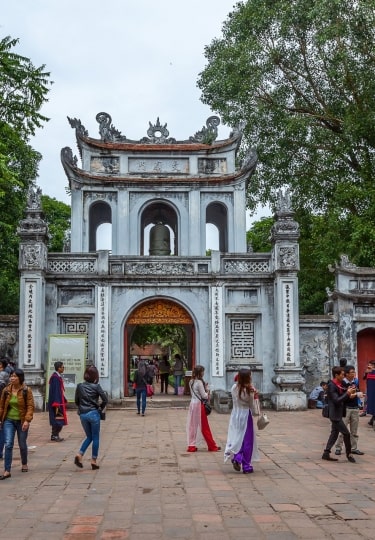Discover the culinary, cultural, and historical riches of Vietnam’s capital city. Located in the northern region of the country on the banks of the Red River, Hanoi offers travelers a wide array of activities to experience. Wander the Old Quarter, photograph intricately designed pagodas, browse thought-provoking museums, and peruse markets for authentic handicrafts.
Don’t miss Hanoi’s fabulous food scene, either, whether it’s a spicy bowl of pho, crunchy spring rolls bursting with fresh herbs or coffee and patisserie from one of the many cafés, the legacy of the French colonialists.
Experience some of the top things to do in Hanoi.
Wander the Old Quarter
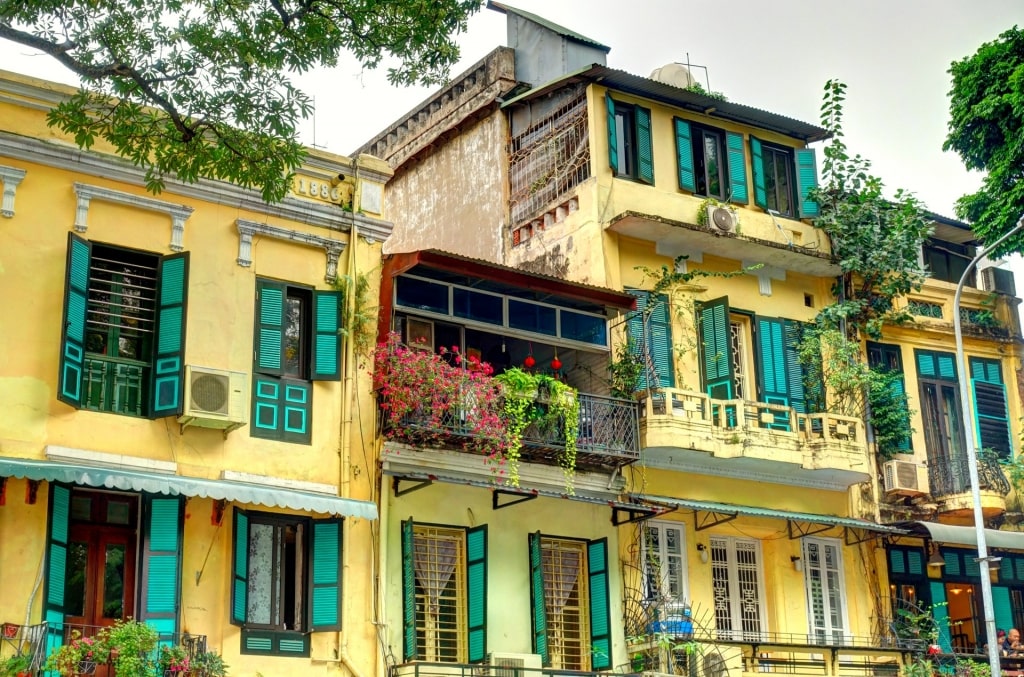
Old Quarter
Visiting Hanoi’s Old Quarter is one of the best things to do in Vietnam. It’s best explored on foot, intriguing thanks to its well-preserved French colonial architecture.
Stroll ancient streets that date back over 1,000 years, long before the French arrived in 1877. Here, you’ll encounter tasty street food and shops selling artisan goods. Sample some of the mouth-watering dishes from the street food stalls, such as banh mi sandwiches (a crusty baguette stuffed with meat and pickles), egg coffee, and cha ca, Hanoi-style fried fish.
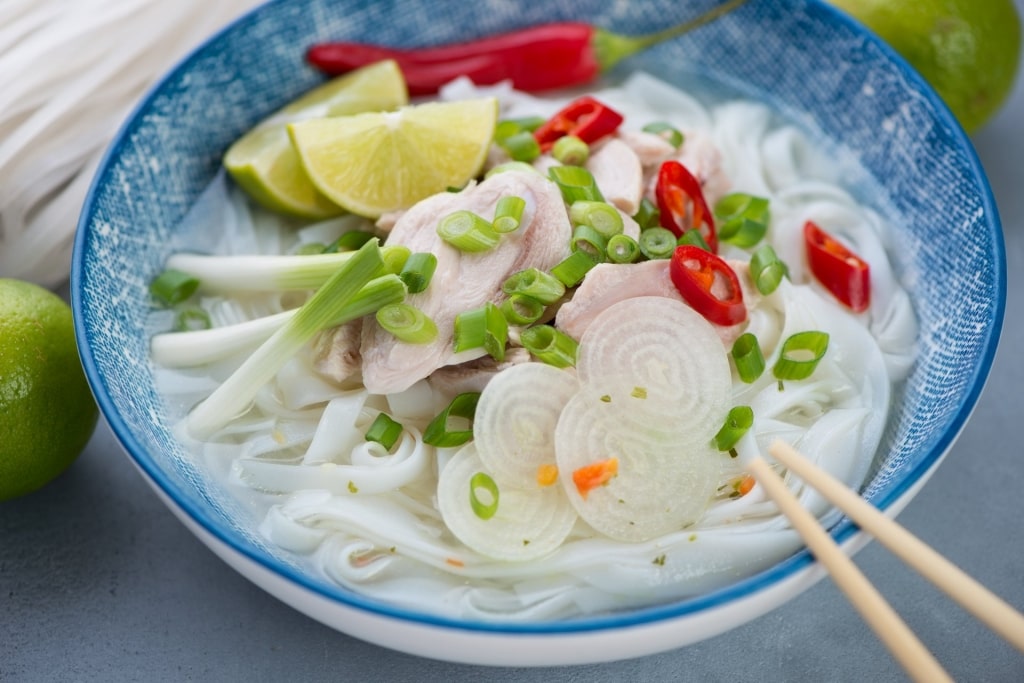
Pho noodle soup
Or take a seat at one of the higher-end restaurants where you can try authentic culinary delights like bo kho, a French-influenced beef stew, pho noodle soup, or banh com, a sweet treat made from rice and mung beans.
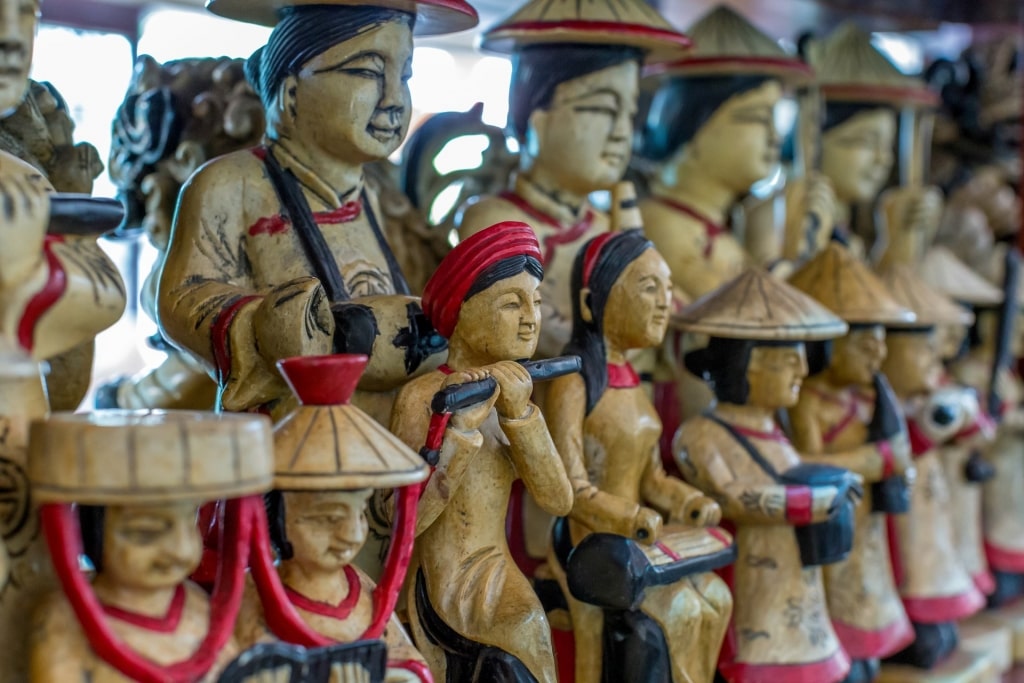
Vietnamese souvenir
If you’re in search of an authentic Vietnamese souvenir, look no further than the Old Quarter. The street names are representative of the 36 traditional artisan sectors, from wooden crafts to tin goods and mirrors.
Venture to Hang Ma for paper products, Hang Gai Street (Silk Street) for fabric and clothing items, or browse beautiful jewelry pieces along Hang Bac Street (Silver Street).
Visit a tailor’s shop, watch basket weavers craft their work, and see how shoes are made by hand all within this walkable merchandise district.
Visit the One Pillar Pagoda
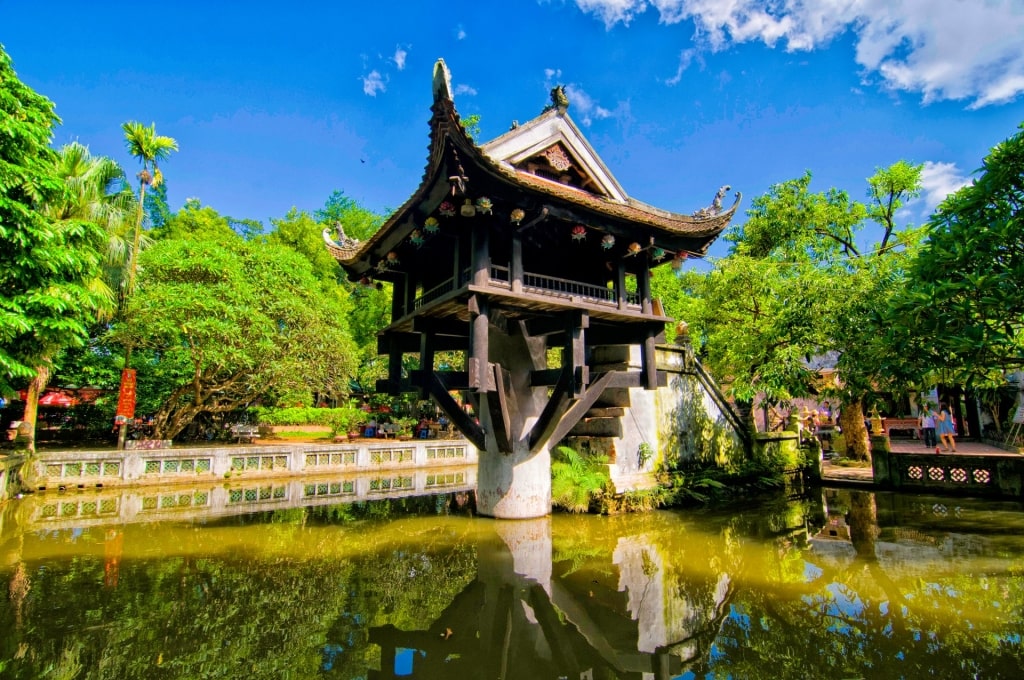
One Pillar Pagoda
Combine history, architecture, and culture all at once with a visit to Hanoi’s One Pillar Pagoda (Mot Cot Pagoda). This famous structure resembles a lotus blossom and is one of the city’s most treasured heritage sites.
Meaning “long happiness and prosperity”, the pagoda was built in 1049 by a king during the Ly Dynasty to pay homage to Quan Am Bo Tat, a goddess in Buddhism who is hailed as the “Goddess of Mercy”. He prayed to her for a child and constructed the pagoda in thanks after his son was born.
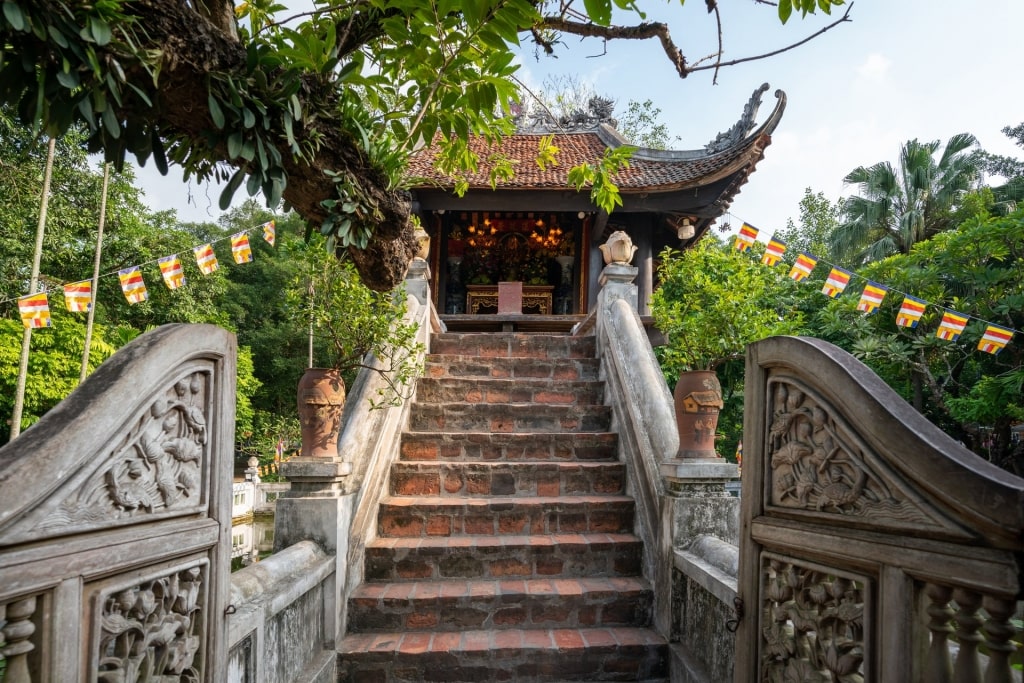
One Pillar Pagoda
Perched in a serene lotus pond, the One Pillar Pagoda is an impressive structure. The temple itself sits on one individual pillar, which is said to represent the sky, while the square pond is meant to represent the law. Thirteen steps lead up to the main structure, with eight wooden beams supporting the pagoda in the form of the lotus flower petals.
Many travelers visit this sacred place during their trip to Hanoi, whether to marvel at the architecture and design, say a prayer, or simply photograph this graceful building.
Stroll Through the Temple of Literature
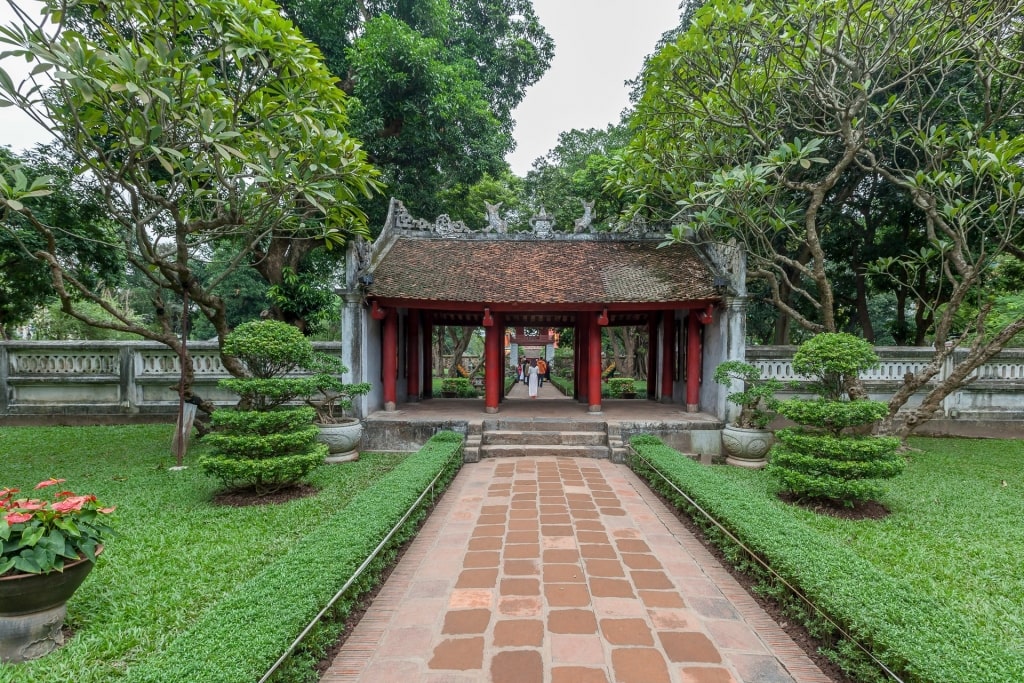
Temple of Literature
Walk the grounds of one of the top Hanoi attractions. Located in the heart of Hanoi, the Temple of Literature is known for its rich history, intricate architecture, scholarly importance, and picturesque courtyards. The temple was built in 1070, and the grounds are dedicated to Confucious and were the location of Vietnam’s first university.
The complex has five courtyards, lush gardens, altars, and a beautiful temple that also graces the Vietnamese currency on the 100,000 dong note. The grounds of this popular attraction are a quiet, tranquil respite from the hustle and bustle of busy Hanoi.
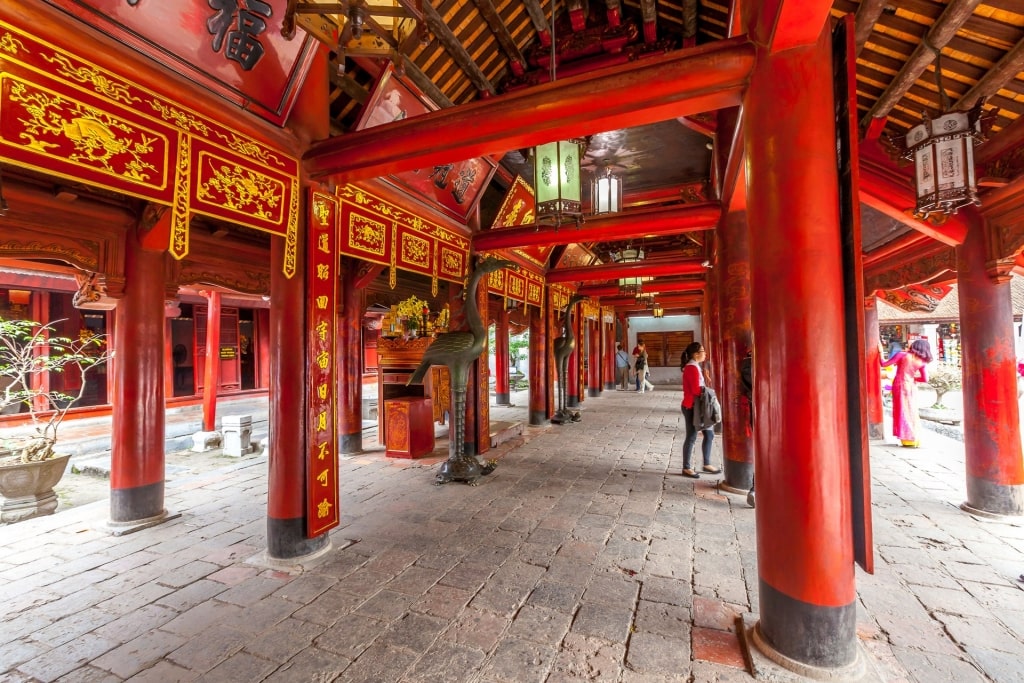
Temple of Literature
Step inside the Temple of Literature and be transported into a sacred space paying homage to the country’s most revered scholars. Marvel at the detailed traditional Vietnamese architecture,
Stroll the courtyards, each with their own character and grand entrance gates.
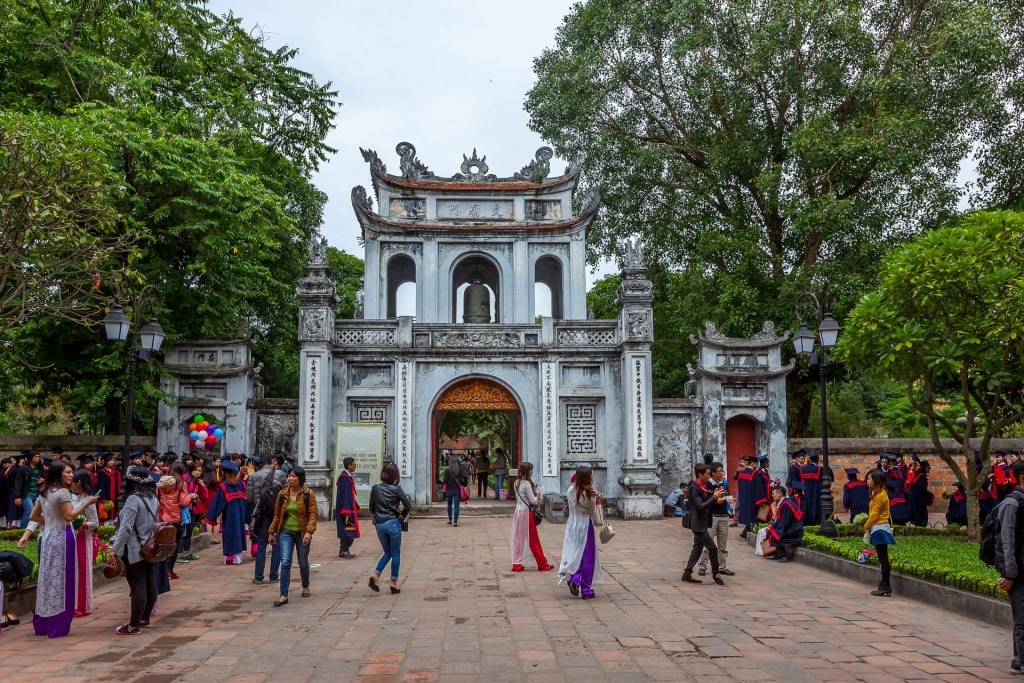
Temple of Literature
In the third courtyard, you’ll find the Well of Heavenly Clarity, a square-shaped pond designed to represent the harmony between earth and sky. In the fifth courtyard, view the Imperial Academy with museum-like artifacts detailing education in ancient times.
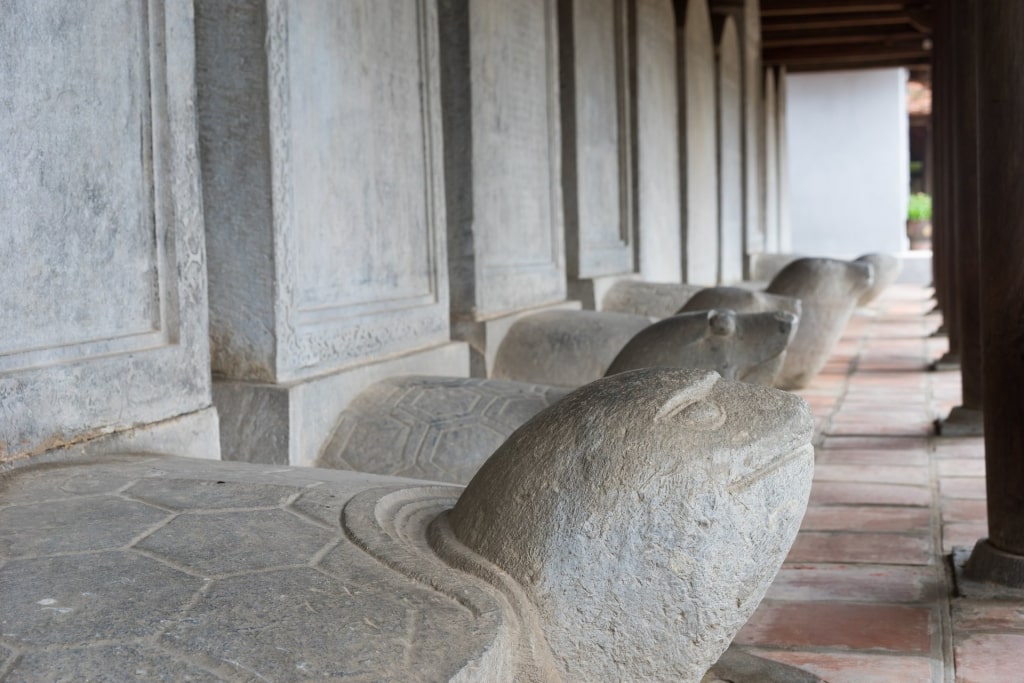
Stelae of Doctors, Temple of Literature
Make sure to take a moment to view the famous Stelae of Doctors, a display of over 80 carved stone turtles. Turtles are thought to be holy creatures in Vietnamese culture, making this a spiritual highlight within the complex.
Step Back in Time at Ba Dinh Square
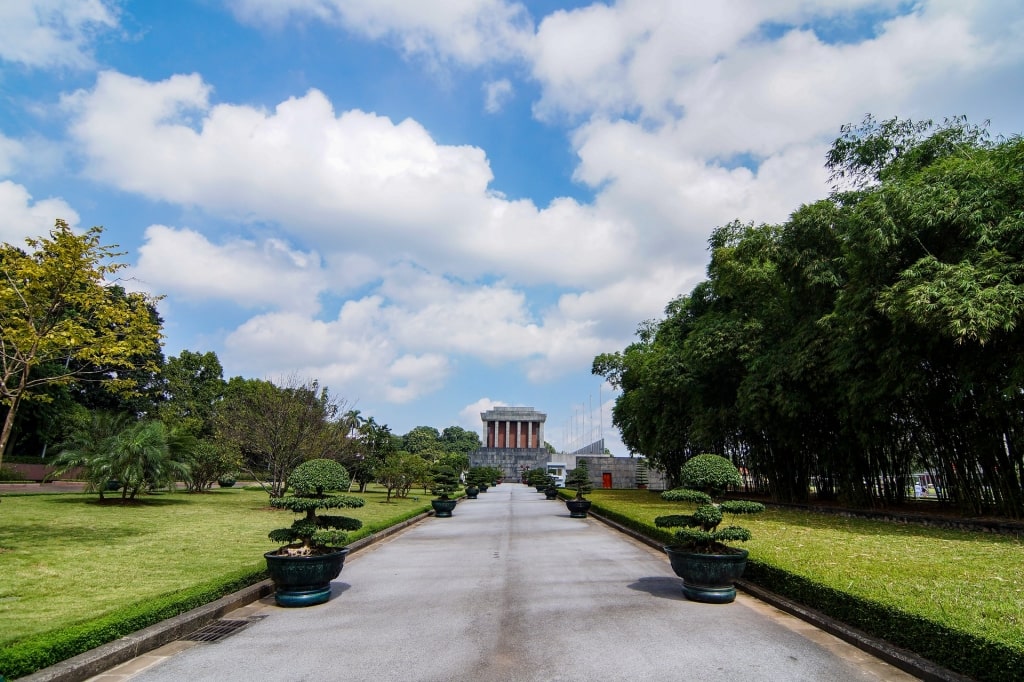
Ba Dinh Square
One of the best-known historical attractions in Hanoi, Ba Dinh Square was the site of the 1945 Presidential reading of the Declaration of Independence. This pivotal moment in Vietnam’s history signified the start of the People’s Democratic Republic of Vietnam.
This site was also where Ho Chi Minh’s funeral was held; you can see the Ho Chi Minh Mausoleum in the square as well.
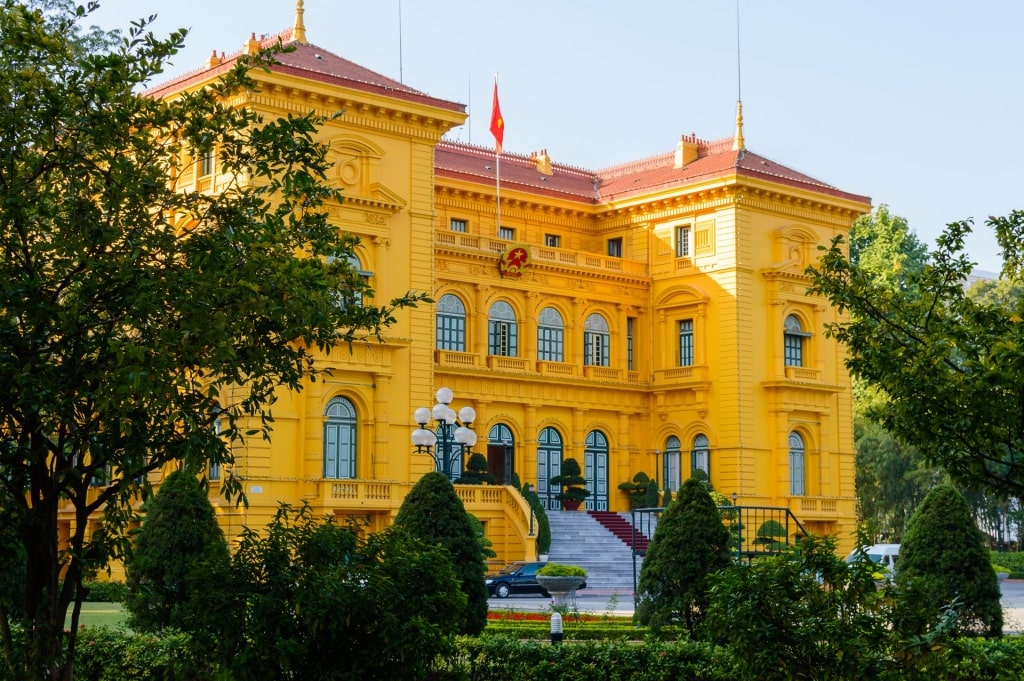
Presidential Palace
The One Pillar Pagoda and the Presidential Palace are both located close to here, making it easy to visit more than one point of interest in combination with Ba Dinh Square. Take time, too, to relax in this urban green space, take in the sights and people-watch.
Enjoy a Show at The Hanoi Water Puppet Theater
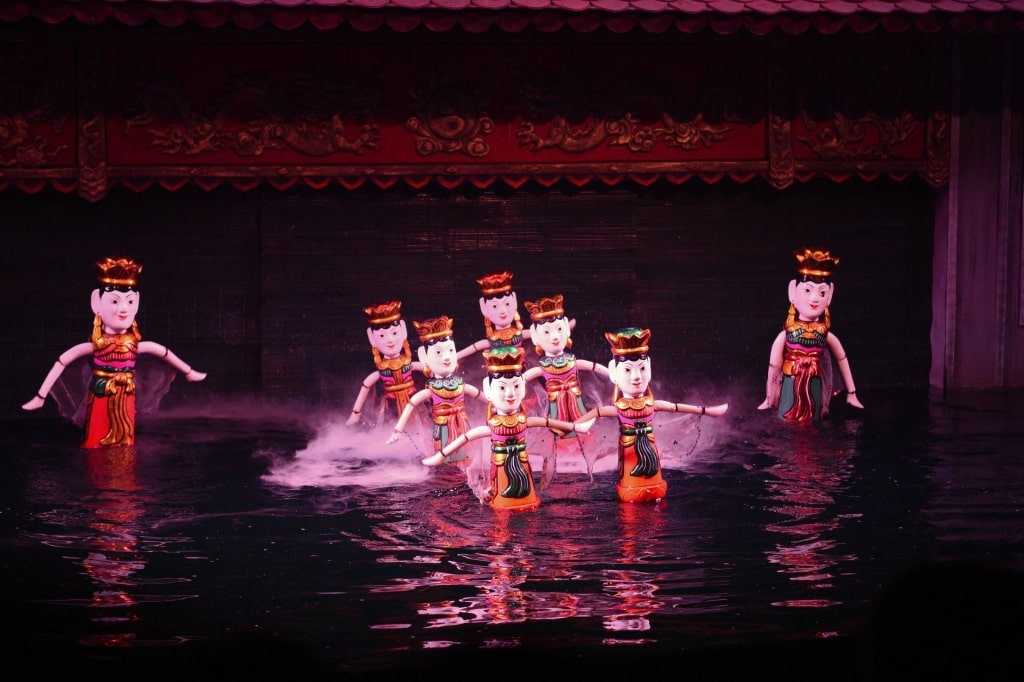
Thang Long Water Puppet Theater
No trip to the cultural city of Hanoi is complete without experiencing a performance at the world-renowned Thang Long Water Puppet Theater. Regarded as one of the best theaters in the world, the water puppet theater in Hanoi has been dedicated to this traditional genre of Vietnamese performing arts since the 11th century.
The theater’s name comes from the original puppet shows performed in waist-high water that occurred when the rice fields in the Red River delta would flood. The villagers used live music and singing to tell their stories, often laced with humor.
Today, performers in Hanoi dazzle theater audiences with folk tales and legends told with giant puppets on poles over a pool of water. Listen to the drums, cymbals, guitars, and bamboo flutes as you’re drawn into these age-old stories during a magical performance. The Hanoi Water Puppet Theater is without doubt one of the best things to do in Hanoi.
Bike Around Hoan Kiem Lake
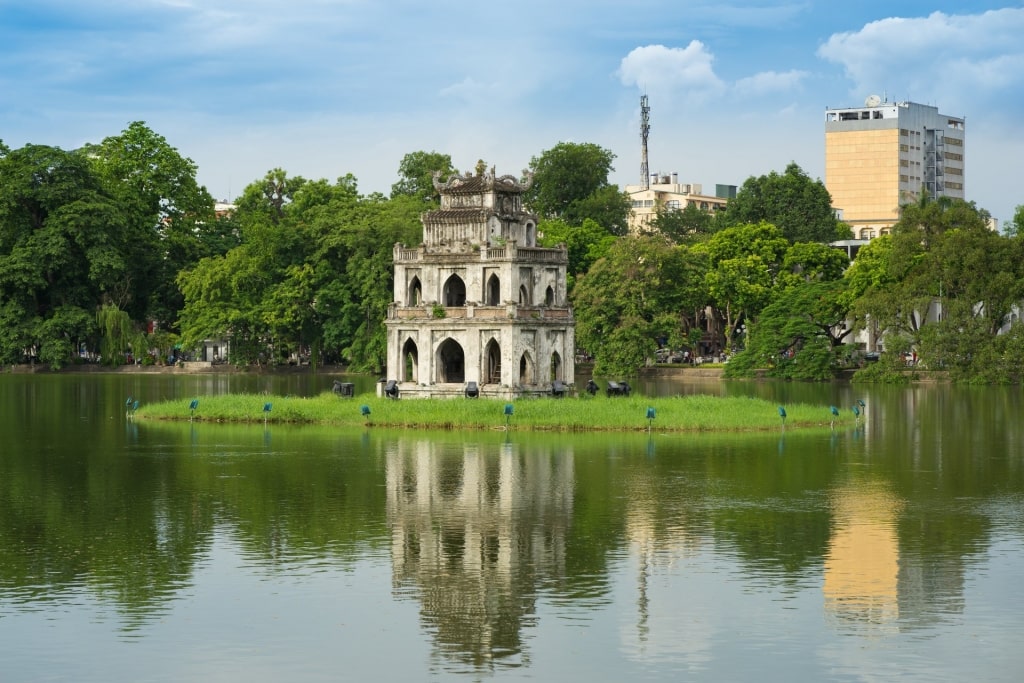
Hoan Kiem Lake
Rent a bike and pedal around Hanoi’s Hoan Kiem Lake (Turtle Lake, or Lake of the Restored Sword), located in the heart of the city.
Its name is derived from a 15th-century legend involving a magical sword that Emperor Ly Thai To employed to drive the Chinese out of Vietnam. After the event, it’s said that a golden turtle took the sword into the lake to return the weapon to its spiritual owners.
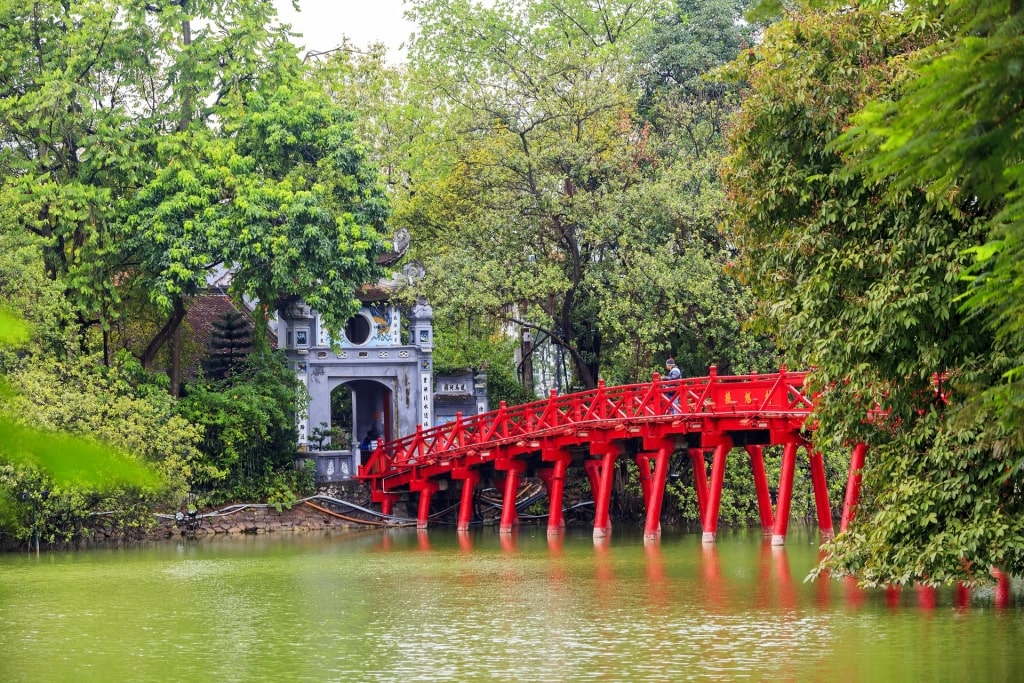
Ngoc Son Temple
Take a leisurely bike ride around the scenic gathering spot and drop into Ngoc Son Temple.
This temple is perched on a tiny island referred to as “Jade Island” in the midst of the lake, constructed in honor of Tran Hung Dao, a military leader made famous for his role in the battle against the Yuan Dynasty.
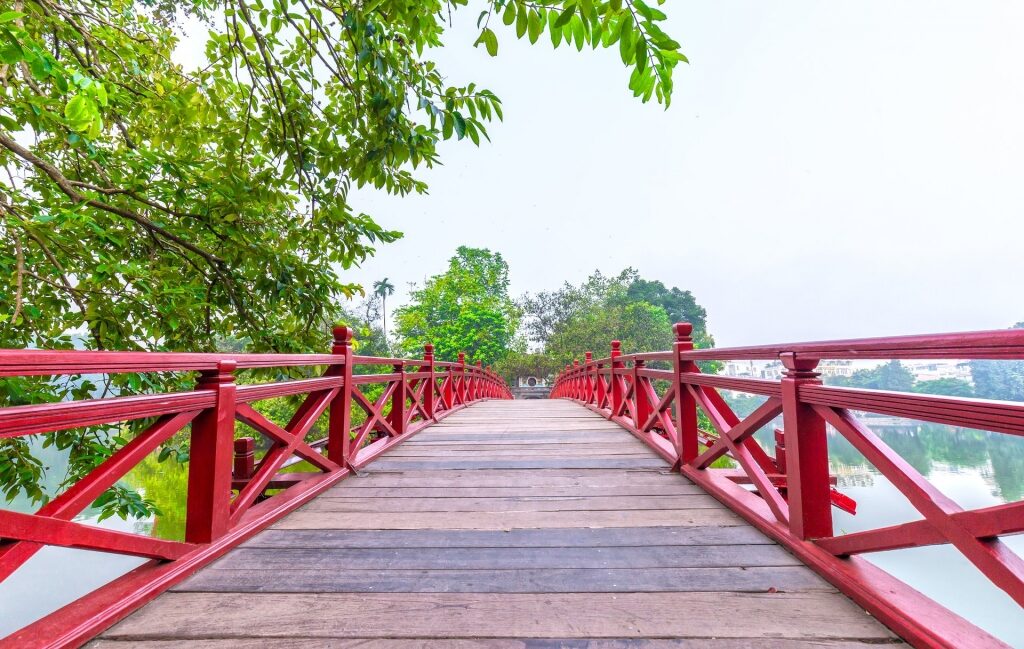
Rising Sun Bridge
To reach the island, venture over the idyllic wooden Rising Sun Bridge (Huc Bridge), decorated with traditional Vietnamese painting and designs.
Take note of the Chinese inscribed stone gateways that decorate the edge of the lake too. Photography enthusiasts will find ideal scenery here to capture the essence of this city oasis.
Walk Over the Long Bien Bridge
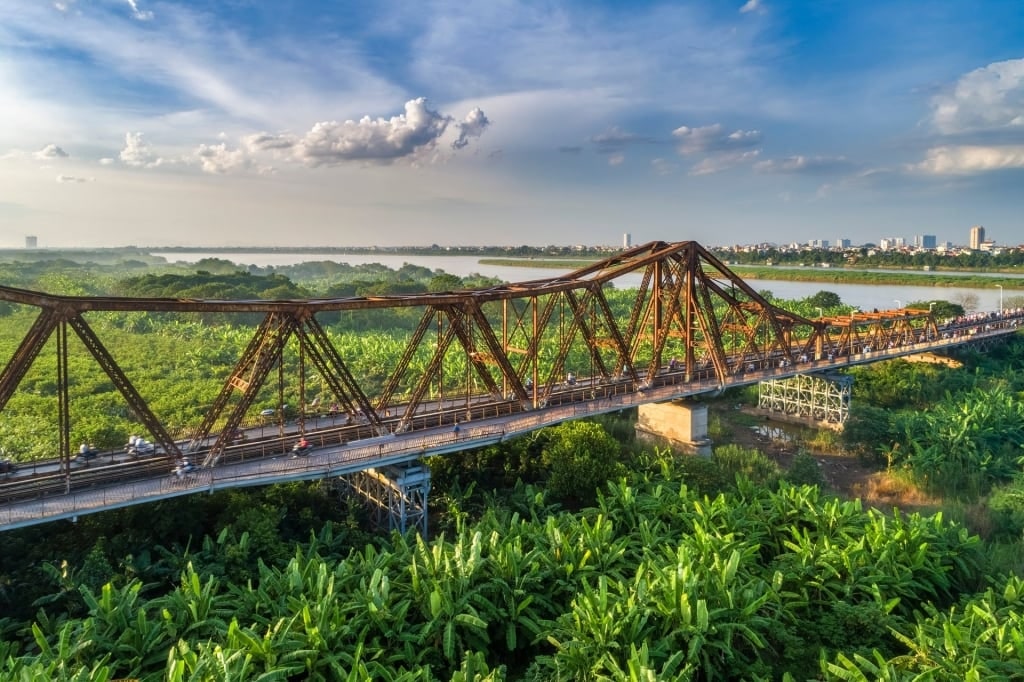
Long Bien Bridge
Stretch your legs with a walk over the famous Long Bien Bridge, built at the very beginning of the 20th century, in the same timeframe as the Eiffel Tower in Paris. Designed by French architects, the historic cantilevered structure was the first steel bridge to link both sides of the Red River in Hanoi.
Connecting the districts of Hoan Kiem and Long Bien, the bridge survived several attacks during the Vietnam War, making it an important historical point of interest in Hanoi. The bridge is considered symbolic of Hanoi and the resilience of the Vietnamese people.
It’s now composed of some portions of the original structure as well as newly repaired sections while work is done to restore the bridge to its initial appearance.
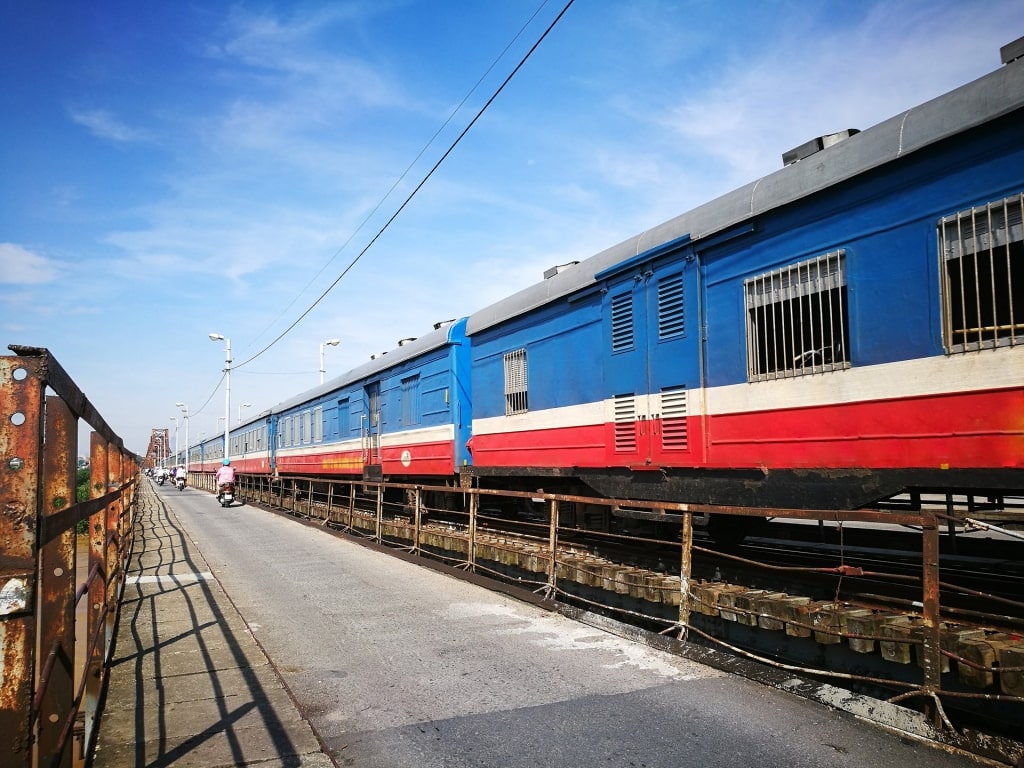
Long Bien Bridge
Venture across on the pedestrian path, stopping to take in the sprawling views along the way. Purchase a snack from the street food carts to enjoy as you stroll, and don’t forget your camera, as the views are stunning.
Learn About War History at the Hoa Lo Prison Museum
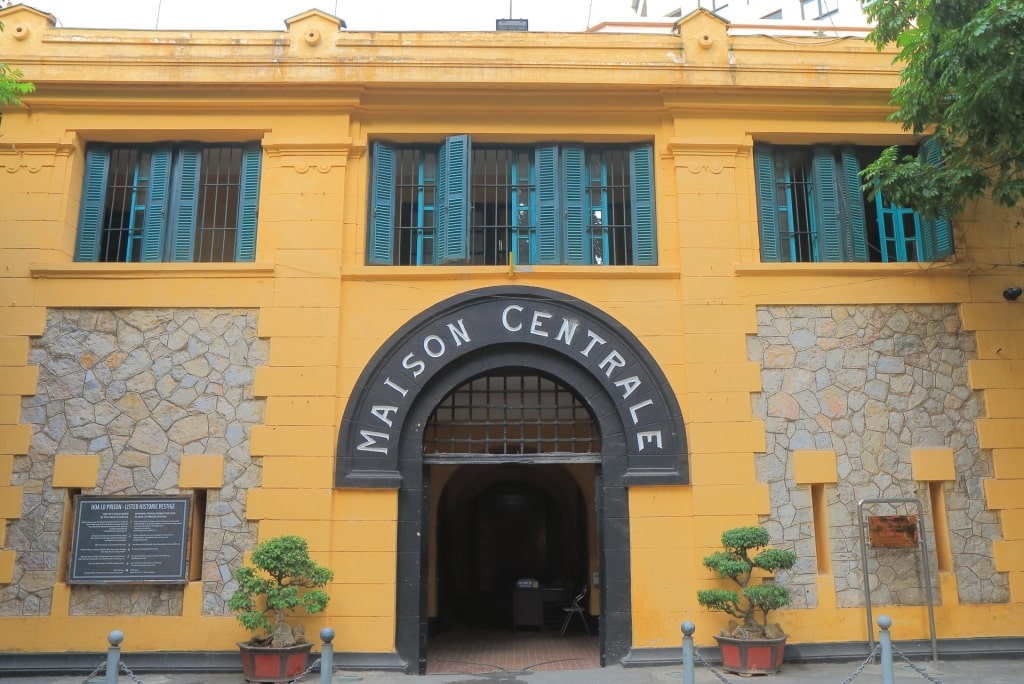
Hoa Lo Prison Museum
Known famously as the “Hanoi Hilton” during the Vietnam War, the Hoa Lo Prison Museum is one of the most powerful and historically significant museums in Hanoi. Situated near the city’s French Quarter, the structure has held many prisoners, soldiers, and pilots in the original “Maison Centrale” (central prison).
Constructed in the 1890s, it was originally built by French colonizers to hold Vietnamese criminals. Throughout the years, it imprisoned Vietnamese Communists and American prisoners of war, captured during the Vietnam War. Although a large portion of the prison was taken down in the 1990s, the parts that remain intact were turned into a museum.
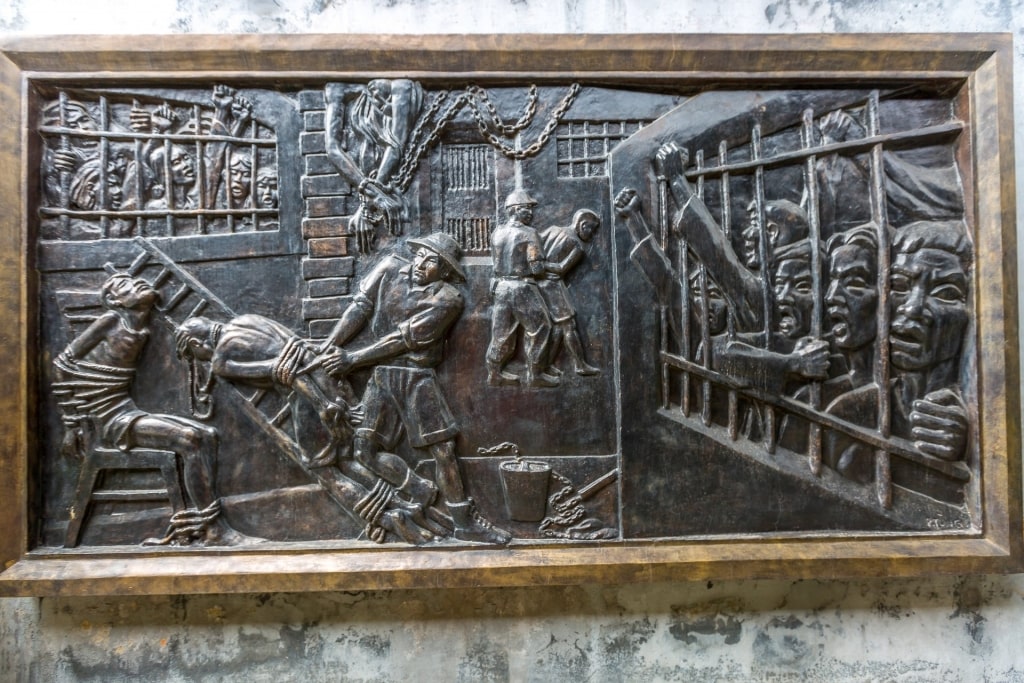
Hoa Lo Prison Museum
Tour impactful exhibits that show the village of Phu Kanh, which was here before the prison was built. View relics such as pottery and kilns from the village trade of ceramics, before moving onto the next room where you can see a model of Hoa Lo Prison as it first was. Here, you’ll get a look at the large steel gate and the front door of the prison.
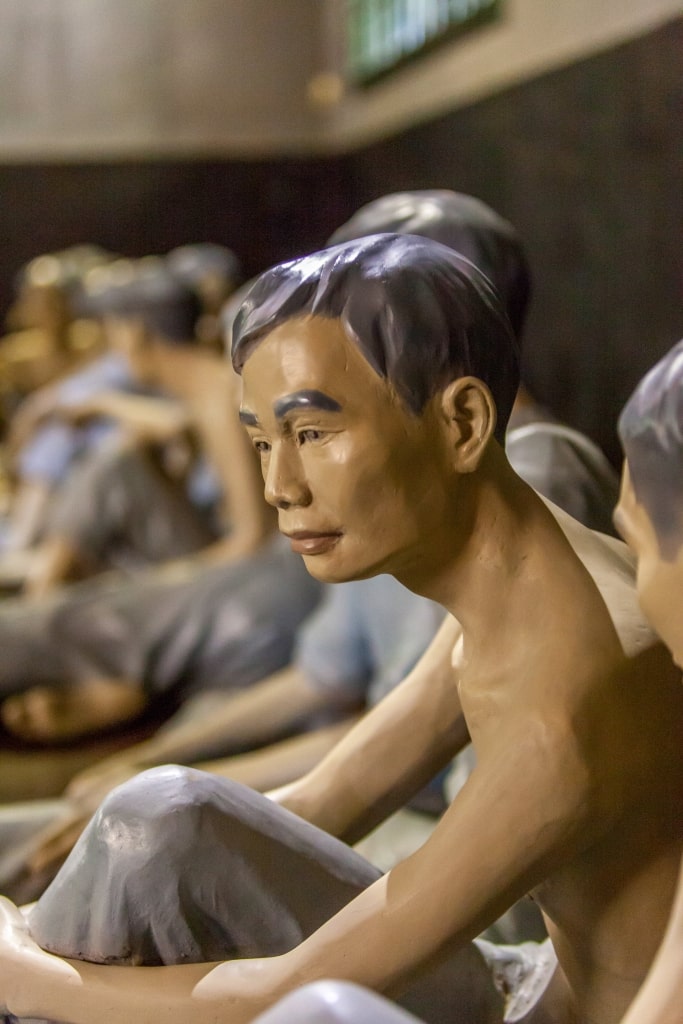
Hoa Lo Prison Museum
Other displays include the stockade room where prisoners were shackled, and a glimpse into what life was like being confined in terrible conditions. Dungeons for solitary confinement, memorials to various prisoners, death row, and the guillotine are some of the other exhibit items.
In the “Blue Room”, you’ll get a look into galleries at the pilot exhibit showing one point of view on life as an American POW. A memorial room with plaques detailing survivors of the prison exists on the second floor of the museum as well.
Sample Authentic Vietnamese Food
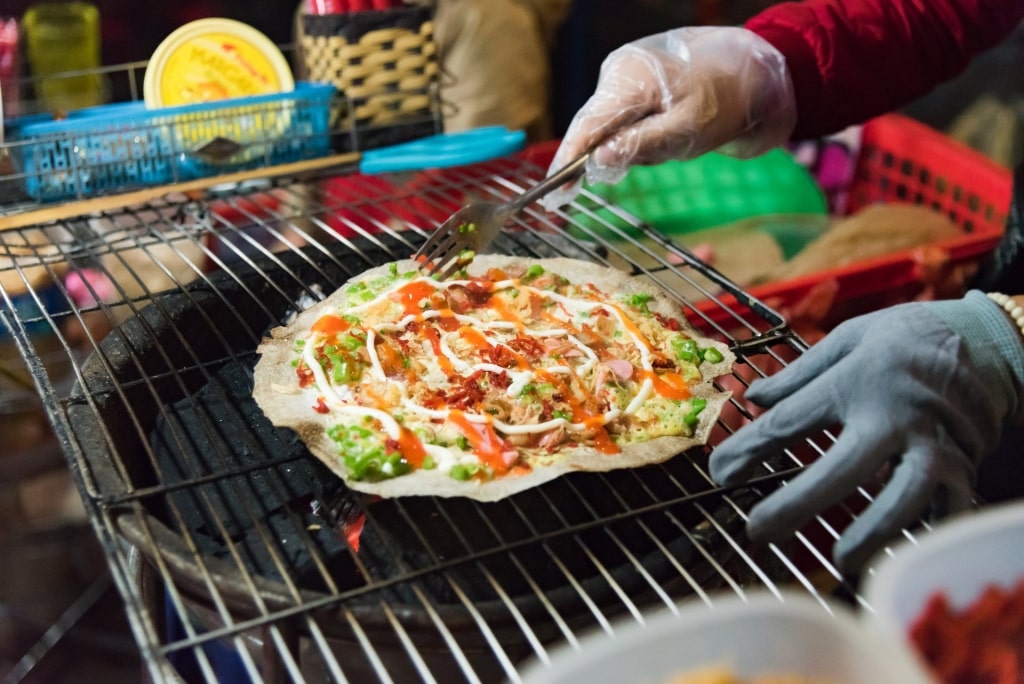
Old Quarter
Hanoi is one of the best destinations in Vietnam in which to sample the country’s exotic flavors and authentic cuisine. Embark on an organized food tour, or set out on your own self-guided Vietnamese food adventure.
In addition to tasting a wide variety of foods in the Old Quarter, you can find culinary excellence throughout the city, from street food stalls and markets to high-end restaurants.
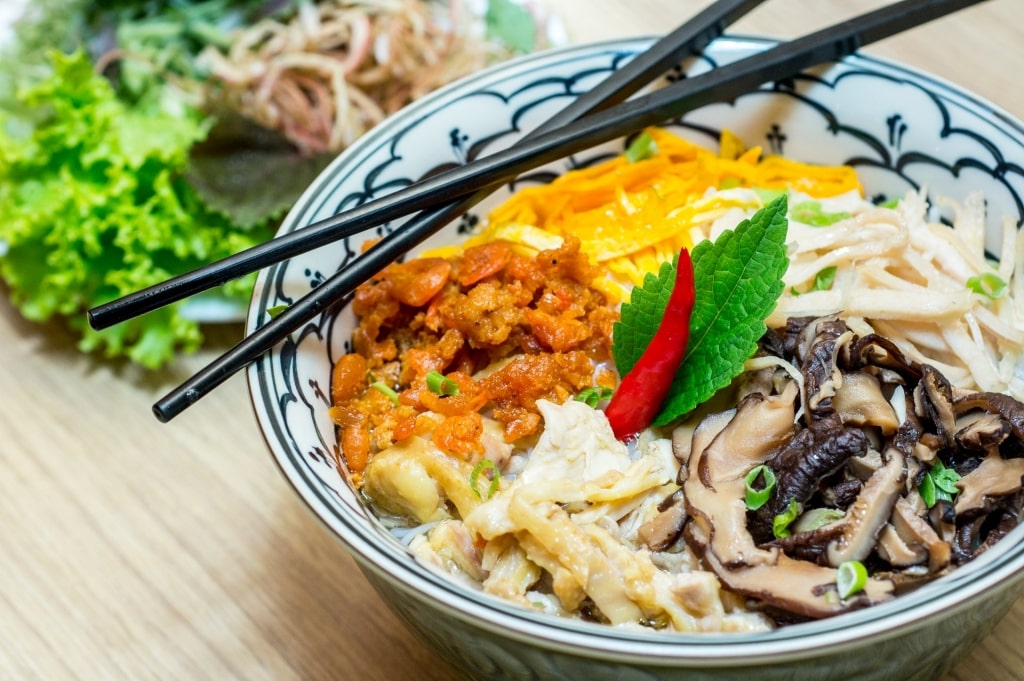
Bung thang
Aside from the classic banh mi sandwich, there are seemingly endless delights to sample while exploring Hanoi. Enjoy the comfort food of bung thang, a soup with rice vermicelli noodles, pork, chicken, turnips, mushrooms, onions, and eggs. This famed dish can be found in specialized bung thang restaurants, as well as some street vendors.
Snack on some goi cuon, a Vietnamese spring roll served with a sweet soy sauce and roasted peanuts that can be purchased from street food stalls as well as in most restaurants.
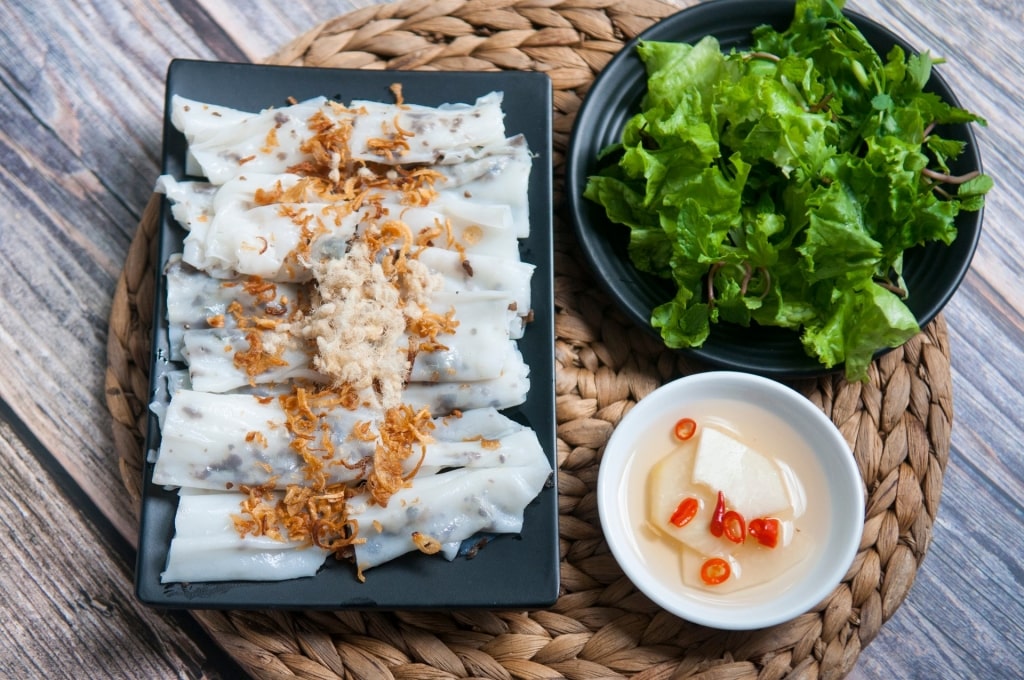
Banh cuon
Indulge in banh cuon, a savory treat typically eaten for breakfast or a daytime snack. A rice paper crepe is filled with ground meat, mushrooms, shallots, bean sprouts, and cucumbers and then dipped into a sauce.
This delicacy can be found from street vendors throughout the city as well as restaurants in the Old Quarter.
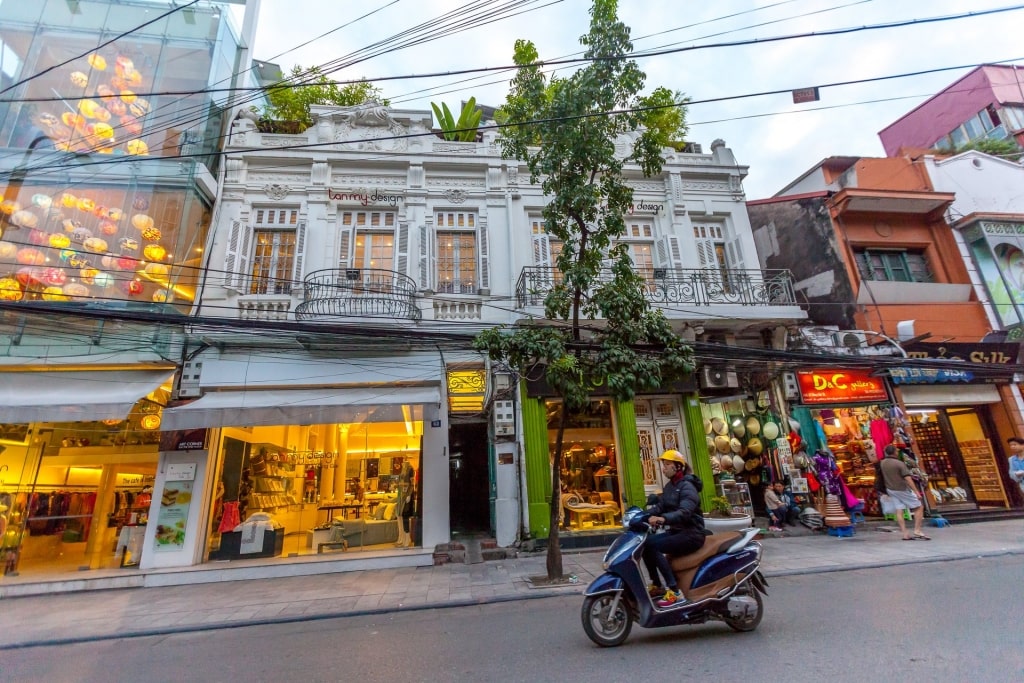
Old Quarter
Discover some of the most amazing attractions in Vietnam’s buzzing capital city on a cruise to Hanoi. From historical temples and museums to cultural experiences and adventures in food, Hanoi will always surprise you. Browse itineraries and book your Vietnamese vacation today.
